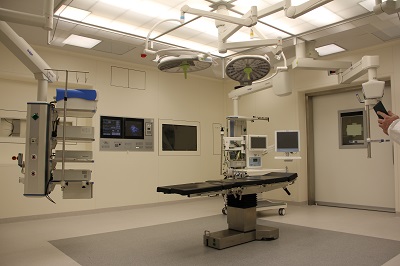Process, Required Materials, and Precautions for B-Class Medical Device Registration in Indonesia (MOH/BPOM)
Registering a B-class medical device in Indonesia involves a multi-step process through the Ministry of Health (MOH) and the Indonesian Food and Drug Authority (BPOM). The following outlines the process, the materials you need to prepare, and important precautions to ensure a smooth registration.
1. Process for B-Class Medical Device Registration
Step 1: Device Classification
- Determine Classification: Confirm that your device qualifies as a B-class medical device according to Indonesian regulations. B-class devices are typically moderate risk and may include devices like diagnostic equipment, dental products, or other non-invasive devices.
- Risk Classification: B-class devices pose moderate risk to patient health and have specific requirements for safety and performance data.
Step 2: Appoint a Local Authorized Representative (for Foreign Manufacturers)
- If you are a foreign manufacturer, you must appoint a local authorized representative in Indonesia.
- The local representative is responsible for submitting the registration application, responding to BPOM’s queries, and ensuring compliance with Indonesian regulations.
Step 3: Prepare Required Documentation
- Collect all necessary documents required for the registration. The list of required materials is outlined below.
Step 4: Register through BPOM’s e-Registration Portal
- Access the BPOM e-Registration portal (e-licensing system) to submit the registration application.
- Create an account, fill out the registration form, and upload the required documents.
- Pay the registration fees through the portal.
Step 5: BPOM Review and Evaluation
- BPOM will review your application, verify the submitted documents, and assess the device’s safety and performance. This includes reviewing risk assessments and clinical data if required.
- BPOM may request further documentation or clarification during this review process.
Step 6: Additional Testing or Inspection (if required)
- Depending on the nature of the device, BPOM may request local testing, clinical data, or an inspection of the manufacturing facility.
- For devices that require testing or clinical trials, the process may take additional time.
Step 7: BPOM Approval and Registration Certificate
- Once BPOM approves the application, they will issue a Surat Izin Edar (SIE), which is the official registration certificate.
- The registration certificate allows you to legally market the device in Indonesia.
Step 8: Post-Market Surveillance
- After receiving the registration certificate, manufacturers must comply with post-market surveillance requirements, including reporting adverse events, safety updates, and participating in inspections if needed.
2. Required Materials for B-Class Medical Device Registration
You will need to prepare the following documents as part of your registration application:
a. General Product Information
- Device Name and Description: Name of the medical device, its model, and detailed description of its intended use and functionalities.
- Classification Justification: Evidence supporting the device’s classification as a B-class device based on its risk level, intended use, and potential patient impact.
- Intended Use and Indications: Clear explanation of the device’s purpose, what medical conditions it is used for, and how it is used.
b. Manufacturing License / Certification
- A manufacturing license or certificate from the regulatory authority of the country where the device is manufactured, demonstrating that the device is produced in a licensed facility.
c. Free Sale Certificate (FSC)
- A Free Sale Certificate issued by the regulatory authority in the country of origin, confirming that the device is legally sold in that market without restrictions.
d. Clinical Evaluation / Performance Data (if applicable)
- For higher-risk devices, or if clinical claims are made, BPOM may require clinical data or performance testing results demonstrating that the device is safe and effective.
- If applicable, include clinical studies or data supporting the device’s performance.
e. Risk Management Documentation
- Risk Analysis: A risk management report or document (often based on ISO 14971) showing how the device has been assessed for risks related to patient safety, and how those risks have been mitigated.
f. Product Labeling and Instructions for Use
- Labeling: Labels must include essential information such as the product name, manufacturer details, usage instructions, and safety precautions. Labels must be in Bahasa Indonesia (Indonesian language).
- Instructions for Use (IFU): Detailed instructions in Indonesian, including device usage, maintenance, contraindications, and warnings.
g. Quality Management System Documentation (if applicable)
- Proof of compliance with ISO 13485 (Quality Management System for medical devices) or another relevant quality standard. This demonstrates that the manufacturer follows stringent quality control measures.
h. Additional Certificates (if applicable)
- Certificate of Conformity: If the device is compliant with international standards (e.g., CE marking, FDA approval), include copies of these certificates.
- ISO 13485 or ISO 14971 certifications for quality management and risk management.
3. Precautions for B-Class Medical Device Registration
To ensure a smooth and efficient registration process, keep the following precautions in mind:
a. Complete Documentation
- Ensure that all documents are complete and accurate. Missing or incorrect information can lead to delays or rejection of the application.
- Double-check that the labels and Instructions for Use (IFU) are in Bahasa Indonesia (Indonesian).
b. Compliance with Regulatory Standards
- Make sure the device complies with local regulations and international standards. This includes safety, performance, and risk management requirements.
- If required, demonstrate ISO 13485 (Quality Management System) compliance to show that manufacturing processes meet quality standards.
c. Local Representative
- If you are a foreign manufacturer, appointing a local authorized representative is crucial. Ensure they are registered with BPOM and understand the regulatory requirements.
d. Pay Registration Fees Promptly
- Ensure timely payment of the registration fees during the application process. Delays in payment may cause delays in processing.
e. Plan for Testing or Inspection
- Depending on the device, BPOM may request additional testing or clinical trials. Be prepared for these requirements and factor in the extra time they may take.
f. Post-Market Surveillance Compliance
- Be aware of post-market obligations once the device is registered. This includes reporting any adverse events or safety issues that may arise after the device is on the market.

Contact Us:
Whatsapp or Wechat:+86 15816864648;email address:hito.lin@grzan.cn
.png)
.jpg)

.png)

.png)